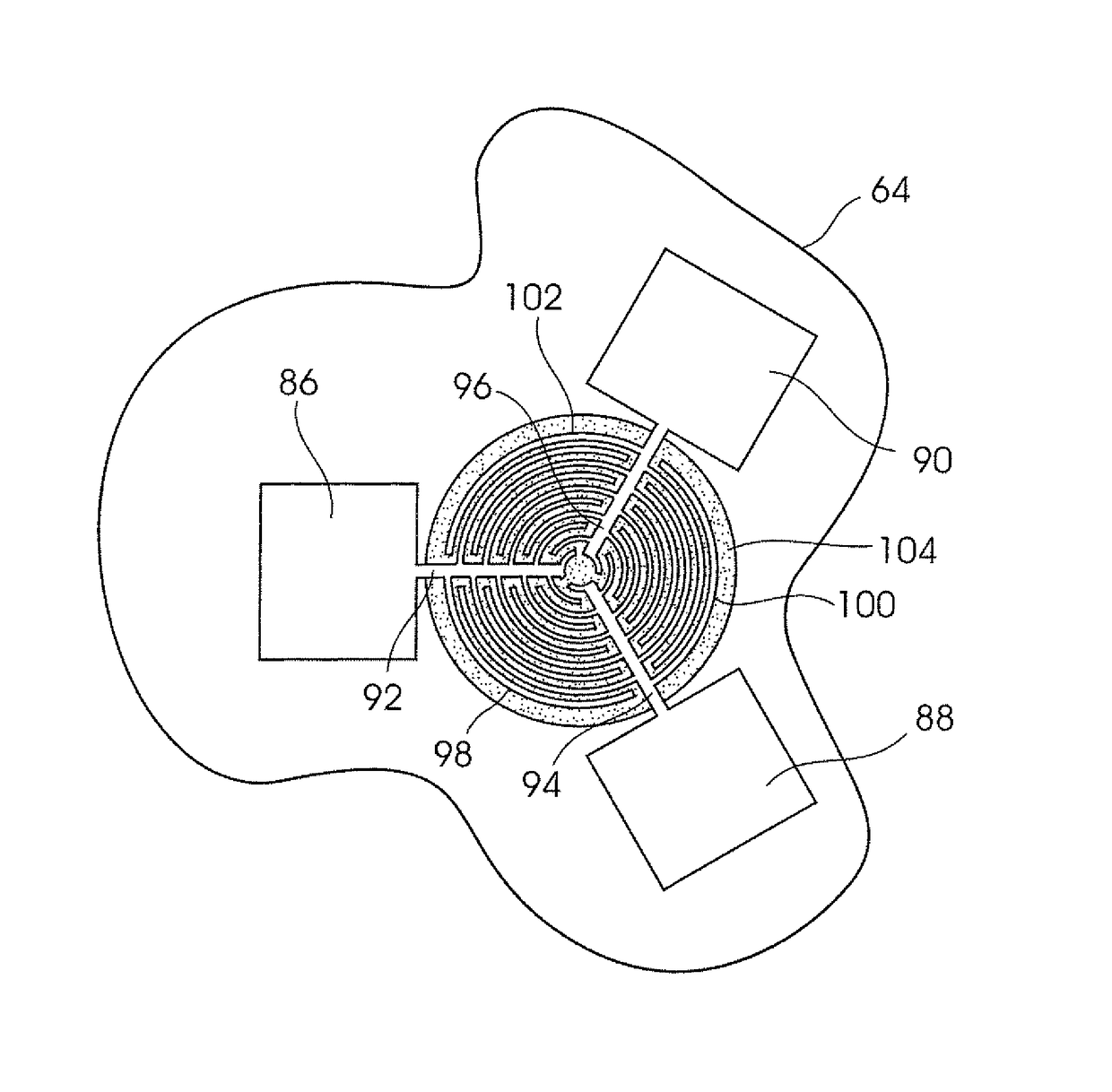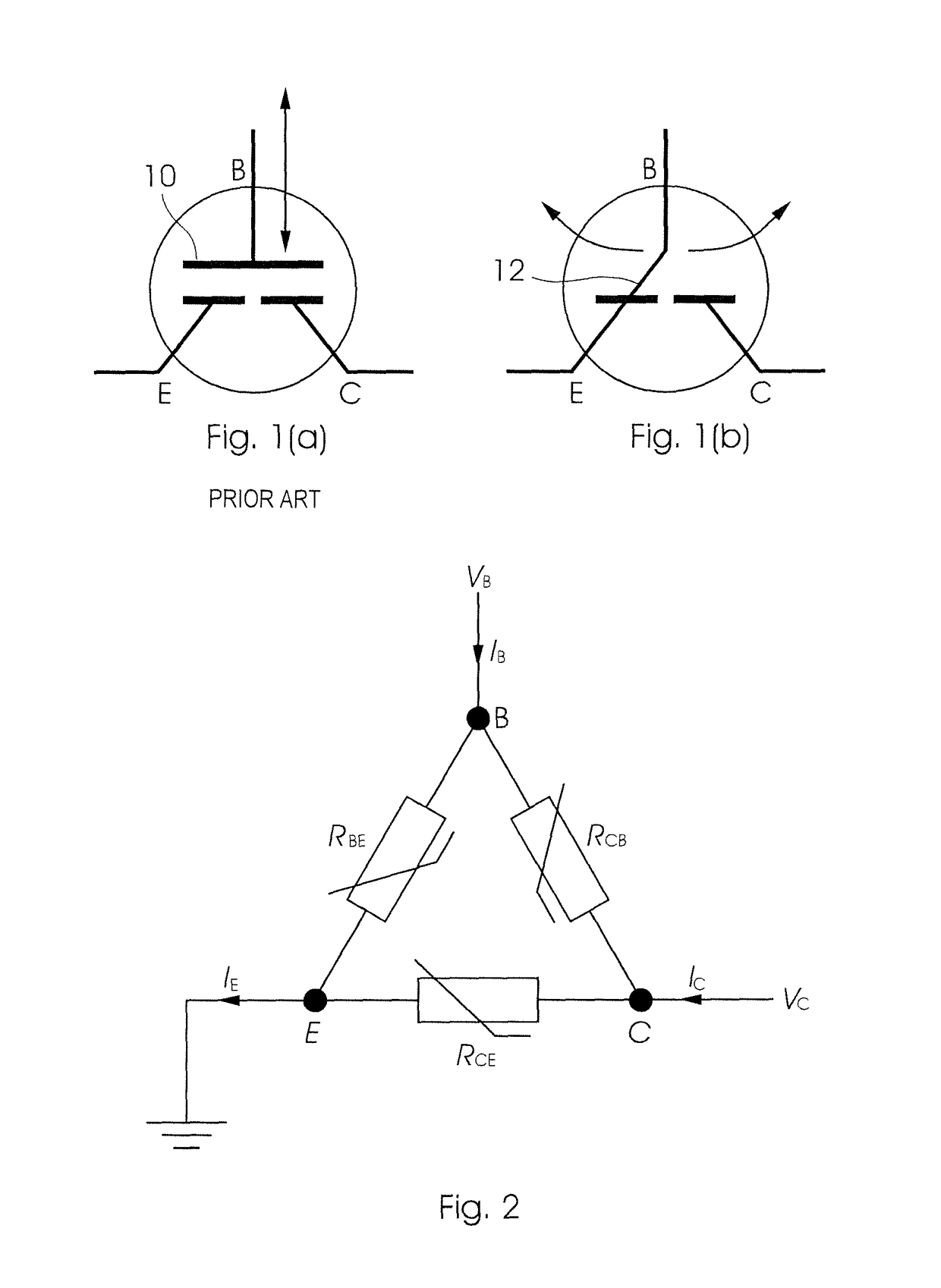Current switching transistor
a current switching transistor and transistor technology, applied in the field of transistors, can solve the problems of depletion or enhancement of the number, the inability to modulate the source-drain current, and the inability to meet the requirements of the application, and the progress in developing the application of transistors to some extent is hindered by the complexity of the printed transistor
- Summary
- Abstract
- Description
- Claims
- Application Information
AI Technical Summary
Benefits of technology
Problems solved by technology
Method used
Image
Examples
examples
[0093]FIG. 9 shows a photograph of a prototype transistor of the third embodiment (FIG. 6) which has been produced by screen printing of conducting and semiconducting inks. The substrate comprises uncoated wood-free paper of weight 80 gram per square metre. Other examples of this embodiment were also fabricated on 160 gsm uncoated paper board and on 100 micron PET.
[0094]The contacts and other conducting parts of the device are printed using Du Pont Luxprint 5000 silver conductor. Similar devices have been produced in which the contacts have been printed with silver and silver alloy inks sourced from other manufacturers, including Creative Materials Inc. and PChem Inc.; and also using Du Pont 7162 Luxprint translucent conductor, which provides a semiconducting material with a constant electric field-independent resistivity.
[0095]The semiconducting pattern was printed using an ink comprising silicon nanoparticles and an acrylic binder. The silicon nanoparticles employed were of the ty...
PUM
 Login to View More
Login to View More Abstract
Description
Claims
Application Information
 Login to View More
Login to View More - R&D
- Intellectual Property
- Life Sciences
- Materials
- Tech Scout
- Unparalleled Data Quality
- Higher Quality Content
- 60% Fewer Hallucinations
Browse by: Latest US Patents, China's latest patents, Technical Efficacy Thesaurus, Application Domain, Technology Topic, Popular Technical Reports.
© 2025 PatSnap. All rights reserved.Legal|Privacy policy|Modern Slavery Act Transparency Statement|Sitemap|About US| Contact US: help@patsnap.com



